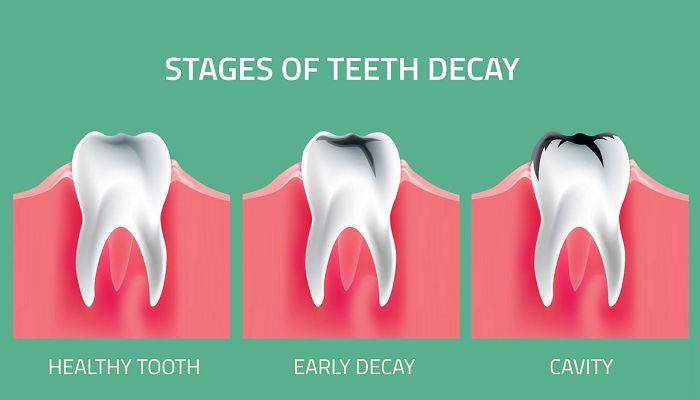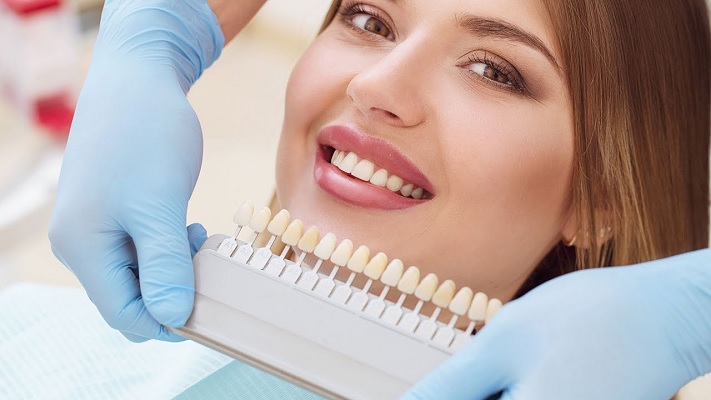Dental caries is the gradual disintegration of dental tissues due to the incidence of bacteria that lodge on its surface. The destruction of the teeth by caries action is mostly given by the lifestyle, that is; In hygiene habits, the food we eat, the toothbrushes and toothpastes we use - or, we DO NOT use - and even the hereditary line can play a role in the sensitivity of tooth decay, explains the best dentist in Delhi.
Although children are more likely to get tooth decay because of their weakness in dairy - candy and also because the enamel layer is thinner.
Adults can also run the same risk especially if there is excessive consumption of caffeine and cigarettes.
To explain this, there are several types of dental caries that can affect people of different ages:
Types of dental caries
Crown caries: these are the most common type of caries. It can be visualized on the chewing surface, or between each of the teeth. It affects both children and adults.
Root caries: over the years, the gums are modified becoming less and less resistant, they gradually retract what the tooth root exposes and since they do not have an enamel coating, they are more susceptible to caries.
Recurrent caries: proliferate greatly on the crowns, since in these areas dental plaque accumulates more strongly.
In all these cases the level of severity is almost the same. If cavities are not treated in time, the next thing that happens is that they will end up damaging the teeth from the inside to the outside. Within that period the so-called abscesses (infection at the root of the tooth) can be formed. For these cases the only viable treatments are surgery, and endodontics (Root Canal Treatment in Rani Bagh).
Causes
In adults, a disorder that can lead to tooth decay is dry mouth. This disorder can be caused by the consumption of medications or by radiation therapy treatments in cancer patients.
Dental caries can be aggravated according to the patient. If oral care is minimal, the next thing that happens is that the person experiences an increase in the number of cavities.
When dental plaque is formed and it is not eliminated with good hygiene habits, cavities get stronger. It is advisable to have an annual consultation or twice a year with the dentist in Rani Bagh to prevent gum disease, enamel loss and tooth decay.
The types of caries can be identified by the dentist with the use of X-rays at the dental clinic in Rani Bagh.
Causes of tooth decay
The formation of caries is progressive, it is given according to the habits of each person. That said, then some of its causes are mentioned:
Plate Formation:
It is a thin transparent mantle that covers the denture, it is created with the excessive consumption of sugary foods and drinks combined with poor oral hygiene, two aspects that if they come together lead to the formation of tartar that accumulates in the bases of the gums as a strong barrier that hinders the destruction of the bacteria that cause many oral diseases.
Plaque Attacks:
The acidic elements that make up the dental plaque destroy the enamel minerals, causing erosion of the teeth. By crossing this first barrier, the bacteria form a chorus around the dentin, a thinner layer that is not very resistant to acids. The dentin is designed to house tiny ducts that connect it to the nerve of the tooth causing extreme sensitivity to food temperatures and flavors.
Continuous Destruction:
The critical stage in the progress of caries is when they happen to enter the inside of the tooth where the “pulp” is located or what is equal the amount of vessels and nerves, in this period the person experiences a greater degree of pain and inflammation due to the spread of the infection throughout the tooth.
Treatment
The treatment is subject to the phase in which cavities are found, so it is essential to have a consultation every so often to avoid problems of major caries.
When it is an initial caries, the specialist removes the affected area with the help of tools and places a filling in the treated area.
On the other hand, if tooth decay has invaded the dental pulp, the dentist in Delhi proceeds to perform a root canal treatment, getting rid of the nerve.
And for the most critical cases, the dentist can remove the affected tooth and replace it with a piece that suits the patient.
Hygiene is a key point in the prevention of dental caries. Brushing your teeth properly and after eating food and before going to sleep is the first step to attack the root problem, avoiding the accumulation of plaque and oral diseases.
Replacing the toothbrush every two or three months is another way to create a protective barrier on the teeth, this prevents the proliferation of bacteria on the bristles of the brush, and after a while it wears out and loses its function.
Choose a good fluoride toothpaste, as well as flossing and mouthwashes.
Avoid consuming sugary foods and drinks excessively. In addition, it is not recommended to eat them between meals as this exposes the tooth to the acid in the bacteria. That's why it's better to consume them outside of meals and brush your teeth after that.
The next step to prevent tooth decay is the custom of attending the dentist in Delhi at least once or twice a year.
This also depends on the recommendation made by the specialist. With a premature diagnosis, the need to have to undergo major treatments that can lead to extensive processes and higher costs is avoided.

